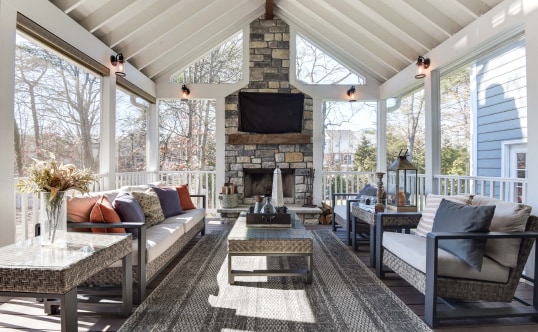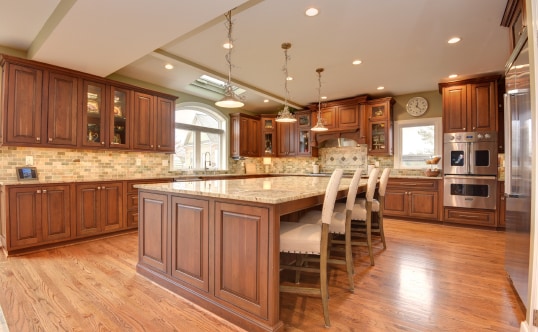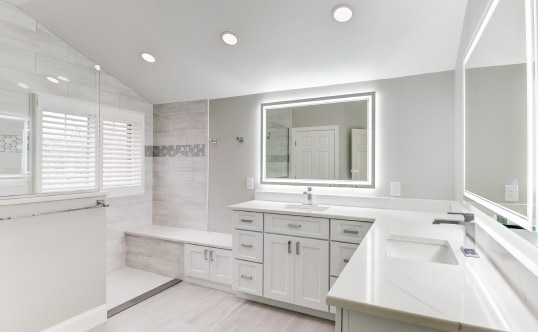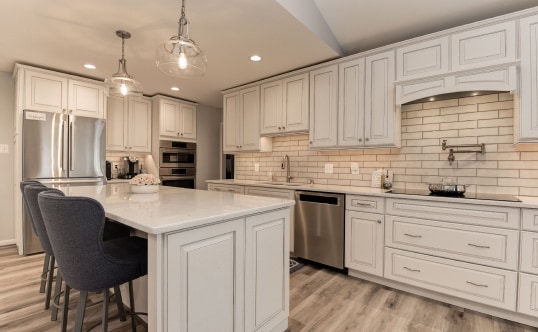JAMES HARDIE SIDING PROJECTS
James Hardie Fiber Cement Siding
James Hardie® fiber cement products combine beautiful design with high performance. These products enhance both curb appeal and excel in durability. James Hardie pioneered the fiber cement industry, inventing the material over 30 years ago. Since then the company has always been ahead of the curve when it comes to fiber cement siding. In fact, technology advancements put James Hardie 5 generations ahead of generic fiber cement. This is due to the company’s investment of more than $100 million in research and development of their fiber cement products.
Make your home remodeling dreams a reality.
Fiber Cement Siding Vs. Vinyl Siding
There are many reasons to choose James Hardie siding over vinyl, the first of which is appearance. James Hardie siding is over five times thicker than vinyl, allowing for deeper grooves and a more authentic wood-grain effect. The result is more elegant than vinyl (which is plastic), particularly on a historic home.
Then comes function. Vinyl melts easily in a fire (or even from the reflection of the sun off Low-E glass windows); James Hardie products are noncombustible. Vinyl may crack and warp from the elements; James Hardie products are more durable and resist warping, sagging and melting.
Fiber Cement Siding Vs. Wood Siding
James Hardie siding is not only less expensive than wood, it won’t be eaten by animals or insects. It also resists water absorption better than wood even where the manufacturer’s recommended protections are followed, helping protect against mold.
When there’s a fire, James Hardie siding is much better at withstanding damage, while wood goes up in flames.
Wood may split, crack and deteriorate over time, while James Hardie siding resists weather damage and keeps its shape for a much longer time, which means less maintenance to worry about year after year.
Fiber Cement Siding Vs. Composite
James Hardie fiber cement is specifically formulated to better resist damage from the very predators—moisture, freezing temperature, humidity, pests and fire—that pose threats to wood-based products.
Oriented Strand Board (OSB), also known as wood composite or engineered wood siding, consists of wood strands bonded together under heat and pressure with a resin. When used for exterior siding, it is susceptible to rotting from water damage.
The bottom edges of OSB can expand and split over time where exposed to cyclic wet and freezing conditions.
Contact Us!
Want to learn more about James Hardie Fiber Cement Siding? Contact our team at Chase Remodeling, a division of Insulators Home Exteriors, or fill out our online form for a free quote!















